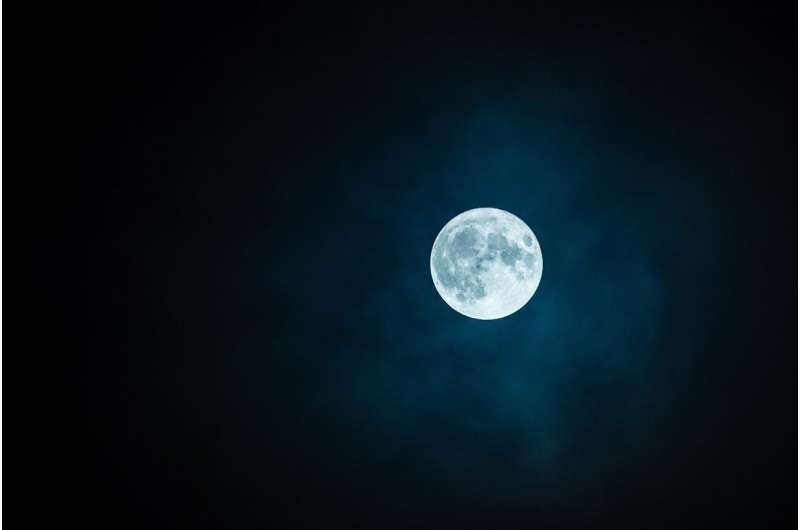Credit: Pixabay/CC0 Public Domain
If you want to learn about the history of the sun, then look no further than the moon. That's the recommendation of a team of scientists who hope to harness future Artemis lunar missions to help understand the life history of our home star.
The sun has always influenced all the bodies in the solar system. Not only do we receive heat and light from the sun, but also a constant rain of high-energy particles and solar wind. And this isn't just happening today, but has happened every single day for the past 4.5 billion years.
On planets like the Earth, however, we've lost the ancient history of the sun's influence on us. The weathering from wind, the erosion from water, and the constant cycles of plate tectonics take any alterations that the sun might have made on our crust and either blown it away or buried it deep within our mantle.
But dead worlds are much better record keepers, according to a new white paper recently appearing on the preprint journal arXiv. And since the moon is the nearest dead world to us, and the target of the Artemis series of missions, we should go looking there.
Admittedly, there has been some surface activity on the moon since its initial formation, like lava flows and impacts from asteroids and comets. But that activity is actually a help rather than a hindrance, according to the white paper. Lava flows can seal off large sections of the surface of the moon from further interaction with the sun. If we are able to dig down beneath the flows and into the deeper regolith of the moon, we would have a snapshot in solar history from before the lava flowed.
And while impacts due tend to mix things up, they also expose deeper layers of the surface, giving us easy access to them.
The researchers outlined a few key quantities that we can measure from lunar samples and how they connect to the activity of the sun. For example, we can look at how long a sample has been exposed to cosmic rays and use that to model the rate of cosmic ray production from the sun for the past few billion years.
We can also look at tracks left by high-energy particles as they burrow into the crust to get at that same information.
Over time lunar soil slowly transforms into brecchia, and this process changes with the amount of solar radiation. By comparing different samples at different depths and locations we can understand the change in the sun's brightness over time.
According to the white paper, there's no more accessible location in the solar system to peer into the sun's ancient history. Simply put, the moon is a solar time capsule.
More information: Prabal Saxena, Natalie Curran, Heather Graham, Lunar Samples are Time Capsules of the Sun. arXiv:2208.13307v2 [astro-ph.IM], arxiv.org/abs/2208.13307
Provided by Universe Today
























